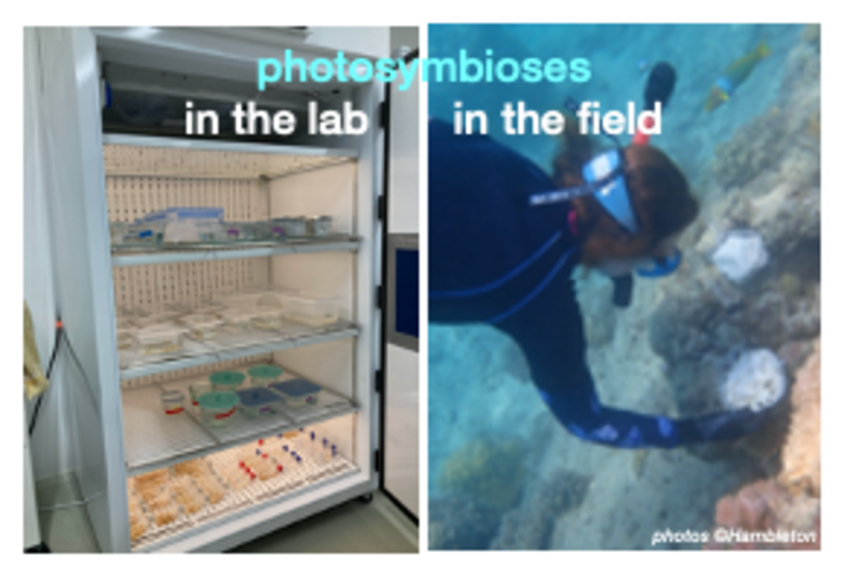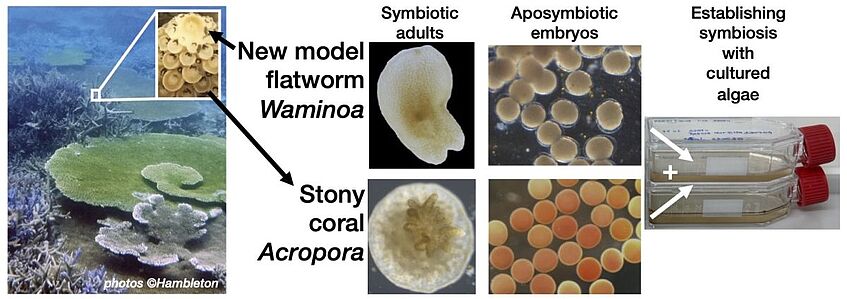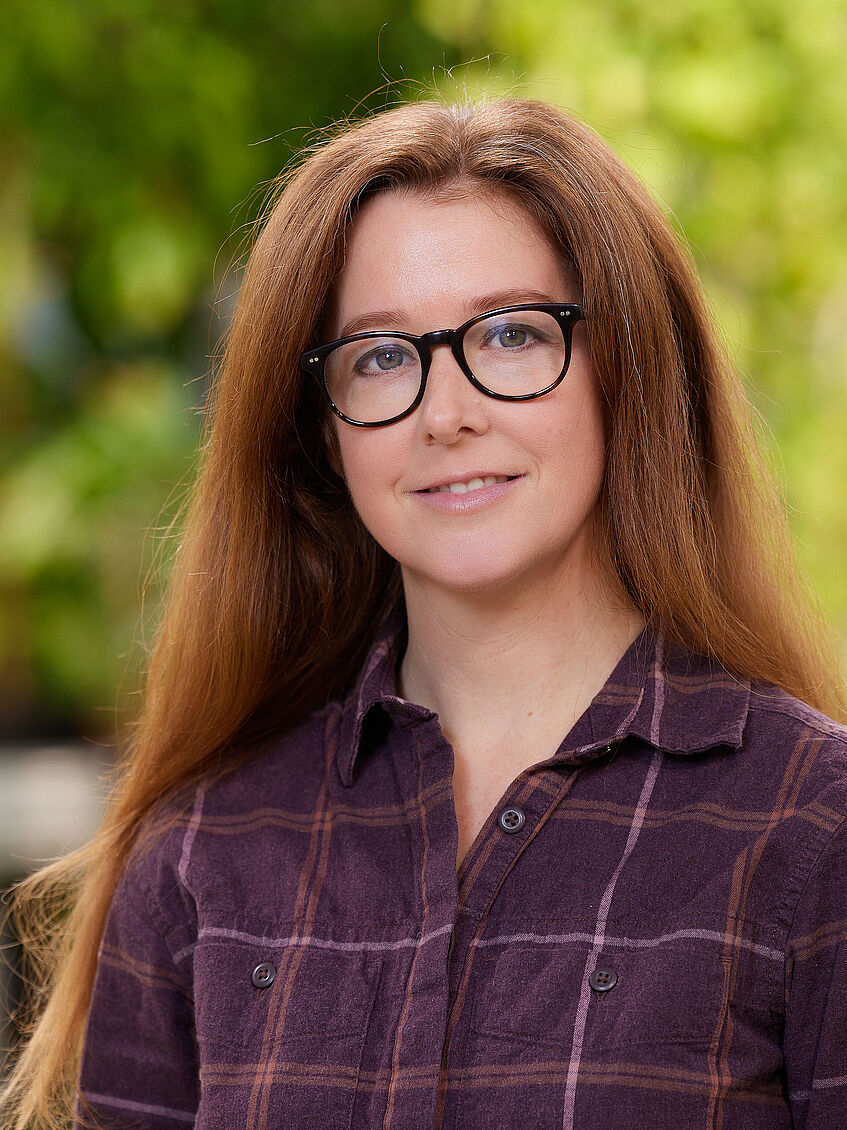Dr. Elizabeth (Liz) Hambleton
Liz Hambleton’s group studies the evolution and molecular mechanisms of diverse, ecologically important photosynthetic symbioses (“photosymbioses”) between symbiotic dinoflagellate algae and marine invertebrates. Her main research questions include: how do different host organisms interact on the cellular level with the same intracellular algal symbiont? What are the molecular mechanisms underlying these symbioses, particularly metabolic exchange? Liz’s group combines functional experimentation in model systems, single-cell transcriptomics, metabolomics, and mass spectrometry-based metabolic imaging. Throughout her career, Liz has been an expert in studying molecular mechanisms of coral-algal symbiosis, including the exchange of essential sterol nutrients. In addition, her group is also establishing a new model system with symbiotic acoel flatworms. The group’s ultimate aim is to understand globally widespread and evolutionarily important photosymbioses and their responses to environmental change.
Ongoing Research Projects
Our Creatures

Our Creatures
We predominantly conduct laboratory experiments using our animal and algae cultures in the AquaLab at UBB, University of Vienna. Some projects also involve fieldwork in the Mediterranean and Japan.
The photosymbiotic organisms we are currently focusing on are cnidarians and acoel flatworms. We have multiple lines of the model sea anemone Aiptasia sp. in the lab, and we conduct fieldwork on Acropora sp. reef-building corals and Anemonia sp. temperate anemones. We have also established a new molecular model system with the acoel flatworm Waminoa sp. In the wild, these flatworms live epizoically on coral surfaces yet have a distinct stable symbiosis with algae. We have multiple clonal lines of symbiotic adults, and have generated aposymbiotic worms. The Waminoa grow happily in AquaLab in Ikea glassware and divide both asexually and sexually. The naturally aposymbiotic juvenile worms grow and take up symbiotic algae from the environment, giving us the opportunity to synthetically reconstitute symbiosis with defined partners.

Current projects in the group include:
- Single-cell transcriptomics in reef-building corals
- Molecular programs of algae-containing animal cells in the novel model flatworm Waminoa
- Defensive lipids in algae-animal photosymbioses
- Transfer and function of microbially-produced sterol lipids in photosymbioses


